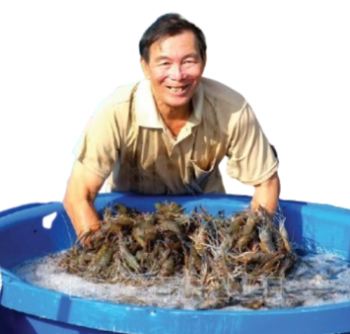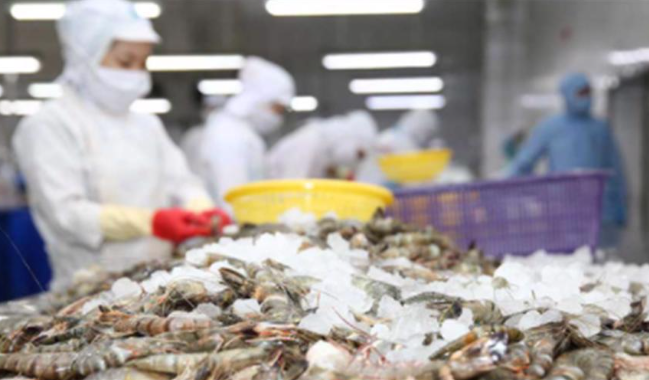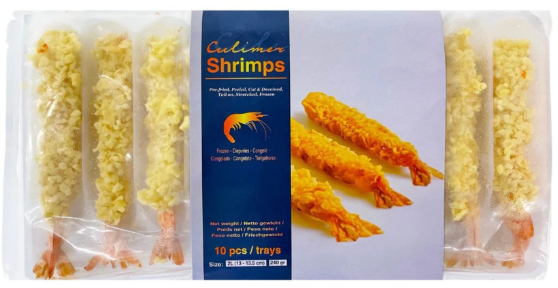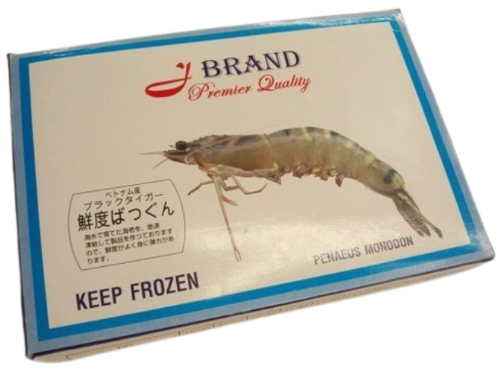|

Many newly stocked ponds continue to suffer from common diseases such as Enterocytozoon hepatopenaei (EHP) and white feces syndrome
Concerns Rise Over Vietnam’s Shrimp Industry Amid Challenges
 VIET NAM
VIET NAM
Wednesday, November 27, 2024, 10:00 (GMT + 9)
Vietnam’s shrimp industry is grappling with significant challenges, including a shortage of raw shrimp and increasing competition in global markets.
 These issues are compounded by disease outbreaks, rising production costs, and evolving trade dynamics, as explained by Dr. Ho Quoc Luc, Former Chairman of VASEP and Chairman of the Board at FIMEX VN. These issues are compounded by disease outbreaks, rising production costs, and evolving trade dynamics, as explained by Dr. Ho Quoc Luc, Former Chairman of VASEP and Chairman of the Board at FIMEX VN.
Shortage of Raw Shrimp
Since mid-August, the price of commercial shrimp in Vietnam’s Mekong Delta has surged due to a decline in supply, largely driven by disease outbreaks in farmed shrimp. Experts attribute these issues to the declining quality of shrimp seed and worsening farming conditions, particularly deteriorating water sources. Despite multiple meetings and seminars addressing these concerns, little progress has been made to mitigate the situation.
The spike in shrimp prices has sparked renewed activity in shrimp farming since October, with shrimp seed sales exceeding 150% compared to last year. However, challenges persist. Many newly stocked ponds continue to suffer from common diseases such as Enterocytozoon hepatopenaei (EHP) and white feces syndrome within a month of stocking.

Photo: Trung Son Group
This precarious situation is expected to last until at least the end of the first quarter of next year, leaving processing enterprises in a difficult position. They face high raw material costs while competing with cheaper shrimp from other countries, which puts pressure on production efficiency and profitability.
The shrimp industry hopes for more favorable weather in 2025 to stabilize raw shrimp supplies and create a stronger foundation for the sector’s recovery.

Photo: VASEP
Global Market Trends and Tariff Implications
Vietnamese shrimp faces stiff competition in the global market, particularly in the United States, which remains a key destination for shrimp exports. The market is undergoing significant shifts due to anti-dumping (AD) and countervailing duties (CVD):
- India: Holding the largest market share in the U.S. at 31%, Indian shrimp is now subject to both AD tax (2.49%) and the highest CVD tax (5.77%). These tariffs are eroding profitability for Indian shrimp farmers and may result in reduced market share in the future.
- Ecuador: With a growing presence in the U.S., Ecuadorian shrimp now claims the second-largest market share (over 26%). It faces only a CVD tax of 3.78% and is steadily displacing Indian shrimp as a dominant supplier.
- Indonesia: Holding the third-largest market share (17%), Indonesian shrimp is subject to a 3.9% AD tax but no CVD tax. However, its market share in the U.S. is declining.
- Vietnam: Vietnamese shrimp accounts for about 8% of the U.S. market and has maintained this position in recent years. While currently benefiting from a 0% AD tax rate, a preliminary rate adjustment is expected by March 2025, which could significantly impact competitiveness.

Vannamei Shrimp Pre-Fried Frozen 24g x 10pcs made in Vietnam. Photo: Casinetto Food Services
Vietnam’s high shrimp prices remain a disadvantage, reducing its appeal compared to Ecuadorian and Indian shrimp. If the AD tax rate increases to 3–5%, Vietnamese exporters will likely need to pivot toward tax-exempt products to remain competitive.
Opportunities and Risks in Other Markets
Beyond the U.S., Vietnamese shrimp faces stiff competition in Japan, where it holds the largest market share but is closely followed by Indonesian shrimp. A potential intensification of competition in this market could challenge Vietnam’s dominance.
China, burdened by high AD taxes on shrimp exports to the U.S., continues to divert a portion of its output to maintain a presence in the American market.

Looking Ahead
Vietnamese shrimp exporters must address several pressing issues to secure the industry’s future. Strengthening disease management in farming, improving seed quality, and optimizing farming environments are critical steps to stabilize raw shrimp supplies. On the international stage, navigating tariff landscapes and maintaining cost competitiveness will be key to sustaining market share.
By adopting innovative strategies and focusing on value-added products, Vietnam’s shrimp industry can remain resilient in the face of mounting challenges while ensuring long-term growth and stability.
[email protected]
www.seafood.media
|



